|
 Secure Site
Secure Site
|
 |
Archive for the 'mindfulness practice' Category
 Utamaro Kitagawa, The Courtesan Hanaogi of Ogiya - 7 Steps to a snooze-free meditation You can manage the urge to sleep with the practice of breath awareness.
1. Sit comfortably erect. Use a chair or a wall to support your spine if helpful.
2. Close your eyes and begin to follow the movements of your breathing. Stay with the breath for a few minutes, until your focus is steady.
3. Without losing your breath awareness, relax your body just as if you were settling it into bed.
4. Continue to follow your breath, maintaining your breath awareness as if it is virtually the only thing of importance in the universe.
5. Relax your mental effort. Maintain a steady hold on your breath, yet relax your body and mind.
6. Now begin to silently recite the mantra so-hum. Let that sound flow with each breath—so on the inhalation and hum on the exhalation. Sense that these sounds are gently blowing away layers of ashes that cover the embers of consciousness in you.
7. Continue for as long as you like. The urge to sleep may come and go, but do not let it dislodge your relaxed breath awareness. Gradually, as you become more rested, your sleepiness will diminish or even disappear. Over a number of sessions you can lengthen the time you sit.
adapted fromYoga International, by Rolf Sovik, PsyD, is co-author of Yoga: Mastering the Basics, May/June 2008
Use our unique “Zen Clock” which functions as a Yoga & Meditation Timer. It features a long-resonating acoustic chime that brings your meditation or yoga session to a gradual close, preserving the environment of stillness while also acting as an effective time signal. Our Yoga Timer & Clock can be programmed to chime at the end of the meditation or yoga session or periodically throughout the session as a kind of sonic yantra. The beauty and functionality of the Zen Clock/Timer makes it a meditation tool that can actually help you “make time” for meditation in your life. Bring yourself back to balance.
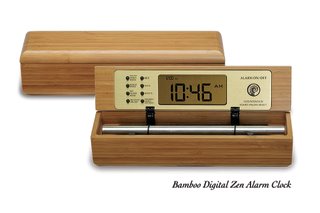 bamboo meditation tools Now & Zen – The Gentle Chime Timer Store
1638 Pearl Street
Boulder, CO 80302
(800) 779-6383
Posted in Meditation Timers, Meditation Tools, mindfulness practice
 meditation practice With practice, this beginner meditation will hold the mind steady even during periods of stress.
A well-trained, stable, and focused mind is an asset in every sphere of life, and essential for any spiritual endeavor. The practice below will develop your concentration, clarity, and inner stability, by providing a single object as the resting place for your mind’s awareness—the universal mantra soham. Practice daily at about the same time, starting with 10 minutes, and gradually increasing to 20–30 minutes, or longer.
Step 1.
Begin by training your body to be still and comfortable in a sitting posture. When the spine is erect with the pelvis, chest, and head vertically aligned, the breath becomes smooth, and the mind alert and relaxed. Sit on a chair, or cross-legged on the floor with a cushion or a folded blanket under the hips. Use enough support to lift the hip joints slightly higher than the knees. This minimizes the effort needed to keep the lower back from rounding.
Step 2.
Close your eyes and mentally draw a circle of light around yourself. The circle separates you from the world of daily life—both the outer world of perceptions and activities, and the world of your familiar preoccupations and thinking patterns. With this intention, see yourself sitting inside this circle of light. It delineates a space in which you can contain your awareness; let it protect you from disturbances, distractions, and mental dissipation.
Step 3.
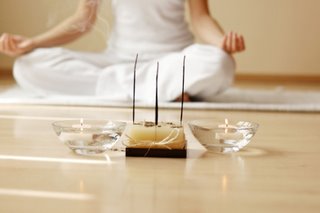 Meditation Feel the entire body sitting comfortably still, release any unnecessary tension, and pay attention to the movement of the breath. Refine your awareness as you feel the breath become smoother and more subtle, expanding from the solar plexus into the limbs on the inhalation, and releasing back to the solar plexus on the exhalation. Be aware of the touch of the breath everywhere in the body.
Step 4.
Making sure the body and breath stay relaxed, focus your attention at each of the following energy centers, moving systematically through the body and inhaling and exhaling once at each point: eyebrow center · throat center · right shoulder · right elbow · right wrist · each of the right fingertips, starting with the thumb · right wrist · right elbow · right shoulder · throat center · left shoulder · left elbow · left wrist · each of the left fingertips, starting with the thumb · left wrist · left elbow · left shoulder · throat center · heart center · navel center · center of the pelvis · pelvic floor · center of the pelvis · navel center · heart center · throat center · eyebrow center.
Step 5.
Now rest your attention at the eyebrow center. Feel the ebb and flow of the breath through the inner space of the whole body, while maintaining your focus on the eyebrow center. Sense the vibration of a slow wave of breath. This vibration is the mantra soham (pronounced so-hum). Hear the sound so on the inhale, and the sound ham on the exhale. The breath is subtle and slow, so let your concentration be fine and sensitive, becoming more and more one-pointed, and gradually drawing deeper into the mind. Rest in this awareness as long as you like.
To finish the practice, gradually return your awareness to the flow of the breath in the body, the physical presence of the body, and the space around you. Remain aware of the breath and your inner connection as you release the body from your sitting posture. You may want to open your eyes into the palms of your hands, massage your face, and stretch your arms and legs before getting up.
adapted from Yoga International, by Sandra Anderson, Summer 2009
Use our unique “Zen Clock” which functions as a Yoga & Meditation Timer. It features a long-resonating acoustic chime that brings your meditation or yoga session to a gradual close, preserving the environment of stillness while also acting as an effective time signal. Our Yoga Timer & Clock can be programmed to chime at the end of the meditation or yoga session or periodically throughout the session as a kind of sonic yantra. The beauty and functionality of the Zen Clock/Timer makes it a meditation tool that can actually help you “make time” for meditation in your life. Bring yourself back to balance.
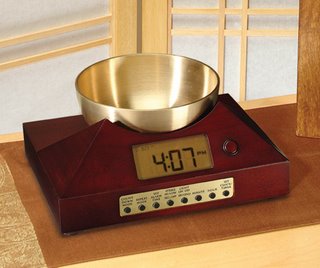 Tibetan Bowl Timer for Meditation Now & Zen – The Zen Alarm Clock & Meditation Timer Store
1638 Pearl Street
Boulder, CO 80302
(800) 779-6383
Posted in Meditation Timers, Meditation Tools, mindfulness practice
 mindfulness practice If you’d like to try another form of walking meditation, try this technique, recommended in the book Breathwalk: Breathing Your Way to a Revitalized Body by Yogi Bhajan and Gurucharan Singh Khalsa.
Step 1. Begin walking at a normal pace, tuning into your body and breath. If you’re not already, begin breathing smoothly and diaphragmatically through your nostrils.
Step 2. Coordinate your breath with your stride, inhaling for four steps and exhaling for four steps. Continue for at least one minute.
Step 3. Begin to practice a variation of anguli pranayama. Take four short, staccato puffs of air through the nostrils—one puff for each step. (This means you are dividing your inhalation into four segments that are synchronized with four consecutive steps.) After the first puff, your lungs should be about one-quarter full; after the second: two-quarters full; after the third: three-quarters full; and after the fourth: four-quarters full.
Without pausing, exhale in the same fashion, contracting the abdominal muscles and pushing the navel to the spine for four steps (and four segments of the out-breath), so that the final puff pushes the last quarter of air out of your lungs. Continue this pattern for five minutes, then walk and breathe normally for three minutes.
Step 4. Now, repeat the eight-minute practice. This time, as you synchronize your segmented breath with your stride, mentally say the mantra “Sa Ta Na Ma” on each inhale and audibly whisper the mantra “Wah Hay Gu Roo” on each exhalation. (One sound for each step and each segmented breath.) Repeat these mantras in coordination with anguli pranayama for five minutes, then walk and breathe normally for another three.
adapted form Yoga International, Former Yoga+ editor Shannon Sexton writes about food, travel, yoga, and natural health, Summer 2010
Posted in Meditation Timers, Meditation Tools, mindfulness practice
 Nautilus Shell by Now & Zen, Inc., Boulder, CO The beauty of the natural world is not easily described—not by poets, and not by geometry. A circle, triangle, or square doesn’t do justice to the colorful crenulations of the eroded canyons of the Badlands, the frost on a windowpane, the roiling thunderheads in a stormy sky, the rocky coast of Scotland, and a luscious head of ripe cauliflower, or the bifurcating structure of the lungs and the nervous and circulatory systems. The complex and irregular forms of the natural world are fractals—complex shapes that exhibit a similar structure at a wide range of scales. Zoom in, zoom out, the pattern remains the same. The structure of every piece holds the key to the whole structure. The entire image is stored in each part of the image. Any object or form that is a similar shape at different scales is a fractal, described by a very simple equation iterated billions of times.
“The universe is full of fractals. Indeed, it may even be one,” writes Ian Steward in Colors of Infinity.
The class of objects the fractals describe include not only a myriad of shapes in the natural world, but also the World Wide Web, the stock market, and a familiar kidney-shaped textile pattern from India called paisley. Paisley made a grand debut in America in the ’60s, when it decorated John Lennon’s 1967 Summer of Love Rolls Royce. Now it adorns everything from carpets and wallpaper to neckties, gangsta bandanas, and T-shirts for yoga lovers, though its origin as an Indian/Persian motif remains obscure.
But perhaps the ancient seers intuitively understood that the paisley pattern displayed the underlying order in the cosmos, illustrating the Sanskrit adage, yatha brahmande, tatha pindande: as in the cosmos, so in the microcosm. So the next time you see frost on the windowpane, a mountain in profile, the bark on a tree, or a paisley print on a loved one’s scarf, think of it as the thumbprint of God—and a reminder of the intelligent, wondrous nature of the universe
adapted from Yoga International by, Sandra Anderson / co-author of Yoga: Mastering the Basics and has taught yoga and meditation for over 25 years.
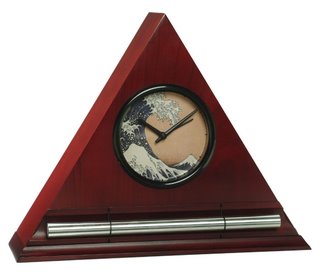 Factals Everywhere, Burgundy Zen Alarm Clock with Wave Dial Face Now & Zen
1638 Pearl Street
Boulder, CO 80302
(800) 779-6383
Posted in Meditation Timers, Meditation Tools, mindfulness practice
 progressive muscle relaxation Get into a comfortable position, either sitting or lying down.
Raise your eyebrows as high as you can, then hold the tension for a moment. Relax, allowing the tension to release.
Squeeze your eyes shut as tight as possible, hold the tension, then relax your eyelids.
Moving down your entire body, tense and relax your muscles, one body part at a time. After your eyes, focus on your jaw, then your chin (creating tension by moving it toward your chest), your hands (squeezing each into a fist), your stomach, your legs, and your feet.
After you’ve reached your feet, spend a few minutes breathing deeply and focusing on how relaxed your body feels. Stretch, and get up when you feel ready.
adapted from Body + Soul, January/February 2010
 digital timers for meditation and yoga with chime Now & Zen
1638 Pearl Street
Boulder, CO 80302
(800) 779-6383
Posted in Meditation Timers, Meditation Tools, mindfulness practice
 meditation requires consistency Meditation requires consistency, being there whether you want to or not. You’ll have days when you just don’t feel like it, but that’s precisely the time you should get on the cushion to observe and work with your resistance, says Summers. “There are great lessons within the resistance.” Meditating at the same time every day may also help solidify your practice.
adapted from Body + Soul
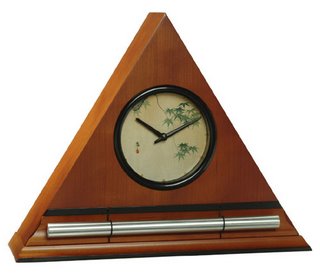 meditation and yoga timers and alarm clocks for a gentle wake up
Now & Zen
1638 Pearl Street
Boulder, CO 80302
(800) 779-6383
Posted in Meditation Timers, Meditation Tools, mindfulness practice
 practice mindfulness with other people Sitting with other meditators at least once a week can fuel your practice. “There is something supportive about the group dynamic that helps to hold you in the environment,” says Summers.
Here and there, I found the elusive present, listening to my breath as if it were the only thing that mattered.
adapted from Body + Soul
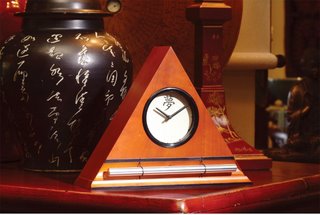 clocks with gentle chimes for a peaceful awakening
Now & Zen
1638 Pearl Street
Boulder, CO 80302
(800) 779-6383
Posted in Meditation Timers, Meditation Tools, mindfulness practice
Meditation Tips for Beginners
 Meditation If you’d like to meditate but feel you don’t have time, start with one minute a day, says Summers. “The amount of time itself is somewhat irrelevant. The key is to start with something manageable and build on that. No one can really say, ‘I can’t find a single minute.'” After a week, add another minute, and keep adding a minute every week. In 20 weeks, you’ll be sitting for 20 minutes; in a year, almost an hour.
adapted from Body + Soul
 quality of though, stillness of being: meditation tools for wellness
Now & Zen
1638 Pearl Street
Boulder, CO 80302
(800) 779-6383
Posted in Meditation Timers, Meditation Tools, mindfulness practice
 yoga in bamboo People prone to negative emotions and stress may be 40 percent more likely to develop mild cognitive impairment, according to a study in Neurology. Study authors hypothesize that a lifetime of stress could adversely affect an area of the brain responsible for regulating memory.
To stop stress from wreaking havoc on your brain, Nussbaum recommends devoting 30 minutes a day to calming activities, such as reading. Or, at a minimum, aim for 10 to 15 minutes of meditation.
adapted from Body + Soul
 Tibetan Bowl/Gong Alarm Clock
Now & Zen
1638 Pearl Street
Boulder, CO 80302
(800) 779-6383
Posted in Meditation Timers, Meditation Tools, mindfulness practice
 walking in waves Set a Zen Alarm or a computer calendar reminder that prompts you to stand up and take a quick stroll — even if it’s just to the bathroom or the water fountain — at least once an hour.
adapted from Body + Soul
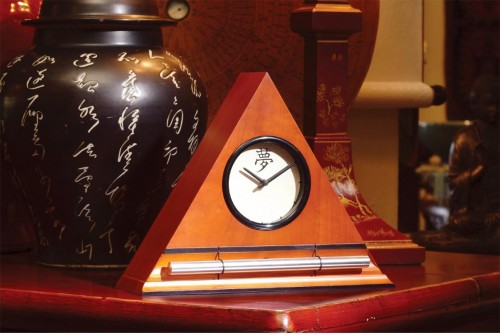 Dream Kanji Honey Finish, Zen Chime Alarm Clock
Now & Zen
1638 Pearl Street
Boulder, CO 80302
(800) 779-6383
Posted in mindfulness practice
« Previous Page — « Previous Entries
Next Entries » — Next Page »
|
|
|
|